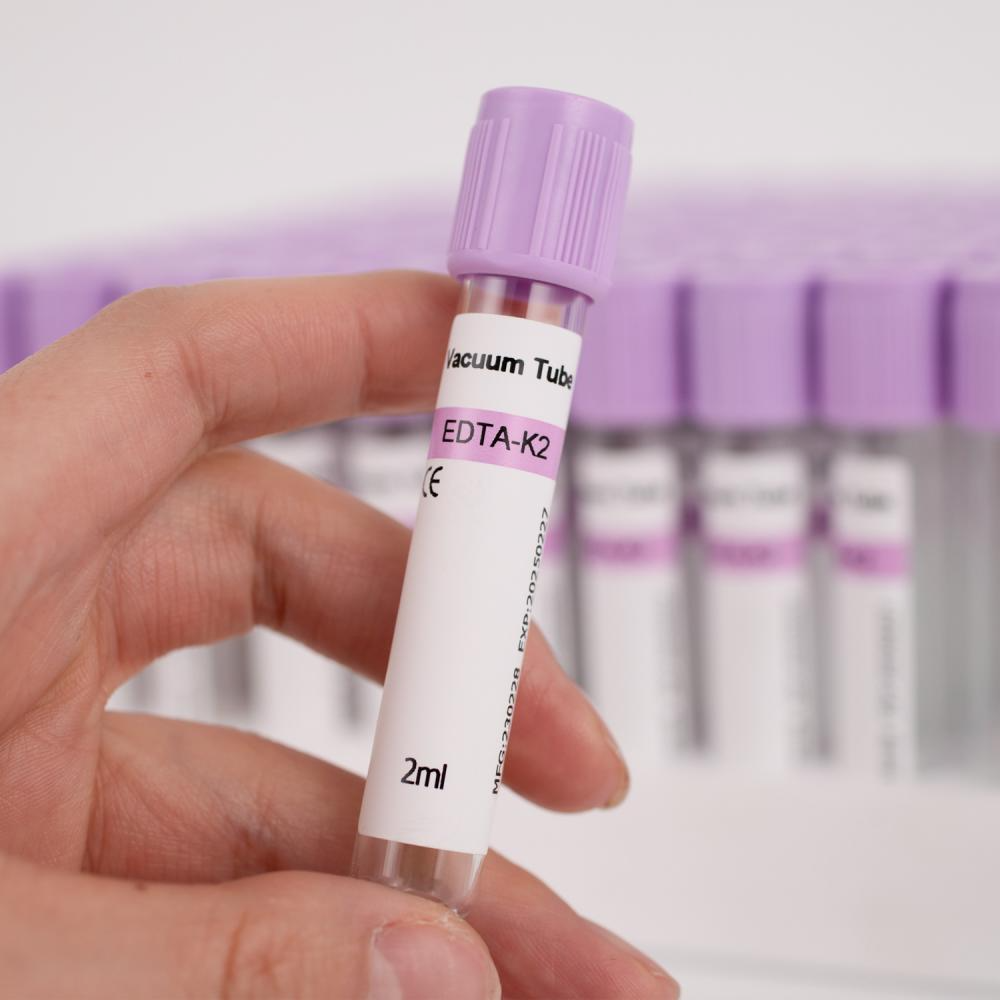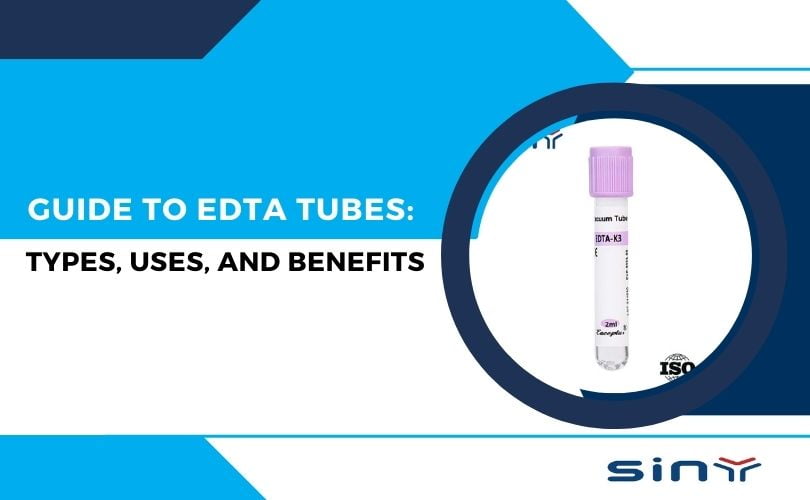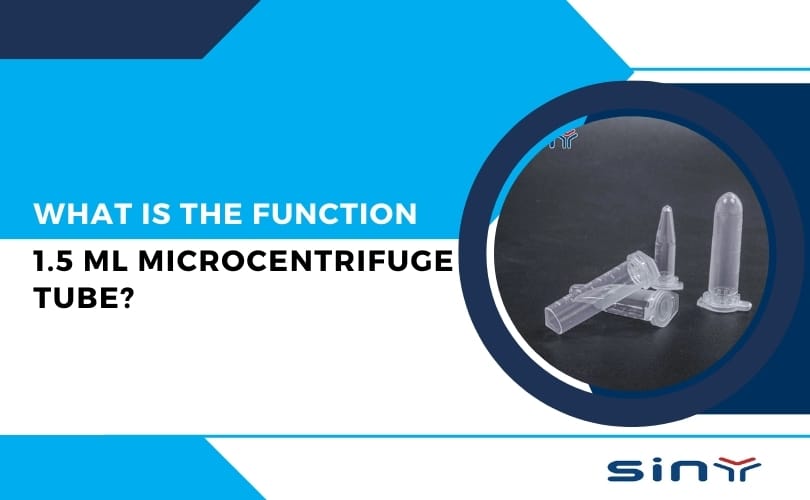EDTA tubes are essential tools in clinical laboratories, primarily used for blood collection. They contain ethylenediaminetetraacetic acid (EDTA), an anticoagulant that prevents blood from clotting by binding to calcium ions. This property makes them ideal for various diagnostic tests, particularly hematology and molecular biology.
Table of Contents
What is a EDTA Tubes?
EDTA tubes, or ethylenediaminetetraacetic acid tubes, are specialized blood collection containers used primarily in clinical laboratories for various diagnostic tests. They contain EDTA, a potent anticoagulant that prevents blood from clotting by chelating calcium ions, essential for coagulation.
The Use of Different Vacuum EDTA Blood Collection Tube
| Volume/ml | Size/mm | Additive | Separator | Material | Cap Color | Closure |
| 2ml | 13X75 | EDTA K2 / EDTA K3 | / | PET/GLASS | Purple Cap Tube | Safety Cap+Rubber or Rubber Stopper |
| 3ml | 13X75 | EDTA K2 / EDTA K3 | / | |||
| 4ml | 13X75 | EDTA K2 / EDTA K3 | / | |||
| 5ml | 13X75 | EDTA K2 / EDTA K3 | / | |||
| 6ml | 13X100 | EDTA K2 / EDTA K3 | / | |||
| 7ml | 13X100 | EDTA K2 / EDTA K3 | / | |||
| 8ml | 16X100 | EDTA K2 / EDTA K3 | / | |||
| 9ml | 16X100 | EDTA K2 / EDTA K3 | / | |||
| 10ml | 16X100 | EDTA K2 / EDTA K3 | / | |||
| If You Need Customized Vacuum Blood collection tube, Please Contact Us | ||||||

Types of EDTA Tubes
- K2 EDTA Tubes: These tubes contain two potassium ions and are commonly used for blood tests. They may slightly increase the mean corpuscular volume (MCV) of red blood cells.
- K3 EDTA Tubes: These contain three potassium ions and are particularly effective in preventing clotting without significantly altering blood parameters.
Uses of EDTA Tubes
Due to their unique properties, EDTA tubes are pivotal in various medical and laboratory settings. Here are some of the common uses:
Hematology Testing
EDTA tubes are the standard choice for hematology tests like CBC (Complete Blood Count). The anticoagulant properties of EDTA ensure that blood cells remain unaltered, providing accurate counts for red blood cells, white blood cells, and platelets. This is crucial for diagnosing anemia, leukemia, and infections.
Molecular Diagnostics
In molecular biology, DNA preservation is vital. EDTA tubes, particularly white-top variants, prevent the degradation of nucleic acids, making them suitable for PCR tests, genetic screening, and other DNA/RNA analysis. It’s important to note that without EDTA, samples would deteriorate rapidly, underscoring the urgency of using EDTA tubes to prevent inaccurate results.
Transfusion Medicine
In transfusion medicine, cross-matching and blood typing are crucial. Pink-top EDTA tubes are used for such tests, ensuring blood is correctly matched between donors and recipients, reducing the risk of transfusion reactions.
Erythrocyte Sedimentation Rate (ESR)
Measures the rate at which red blood cells settle in plasma, often used as an indicator of inflammation.
Benefits of Using EDTA Tubes
The advantages of using EDTA tubes in clinical settings include:
- Prevention of Clotting: By chelating calcium ions, EDTA effectively prevents coagulation, ensuring that samples remain liquid for accurate analysis.
- Preservation of Cell Morphology: EDTA maintains the integrity and shape of blood cells, which is crucial for reliable test results.
- Cost-Effectiveness: EDTA is relatively inexpensive and widely available compared to other anticoagulants like heparin tube or citrate.
- Ease of Use: Available in various sizes with color-coded tops for easy identification, making them user-friendly for healthcare providers.
- Safe for Blood Transfusion Testing: In transfusion medicine, using EDTA tubes for blood collection helps ensure patient safety. The pink-top tubes, designed for blood banking, facilitate safe cross-matching and antibody screening, reducing the risk of transfusion-related complications.
Conclusion
EDTA tubes, with their critical role in modern diagnostic laboratories, facilitate accurate blood testing and analysis. Their versatility, cost-effectiveness, and ability to preserve sample integrity make them indispensable tools. It is important for healthcare professionals to understand the types, uses, and benefits of EDTA tubes, as this knowledge is crucial for optimal laboratory practices and improved patient outcomes, making them feel informed and knowledgeable.
Frequently Asked Questions about EDTA Tubes
What is the purpose of EDTA in these tubes?
EDTA works by chelating calcium ions in the blood, which are necessary for the coagulation process. This prevents clotting and preserves the integrity of blood samples for accurate testing.
Why is EDTA added to blood samples?
EDTA binds to calcium ions in the blood, preventing the clotting process. This keeps the blood in a liquid state, making it suitable for various tests, including those that require cell analysis.
What are the different types of EDTA tubes?
Standard EDTA tubes include lavender-top tubes for CBC tests, pink-top tubes for blood banking, tan-top tubes for lead testing, and royal blue-top tubes for trace element analysis.



























































